How to Choose a Dog
Choosing a dog is a very important task because the pet will become a member of your family. To make sure everyone feels comfortable and experiences only positive emotions, it’s really important to take a few proper steps before bringing your 4-legged friend home.
5-Minute Crafts prepared a guide about how to find the perfect dog for you to make your life together long and happy.
How to select a breed
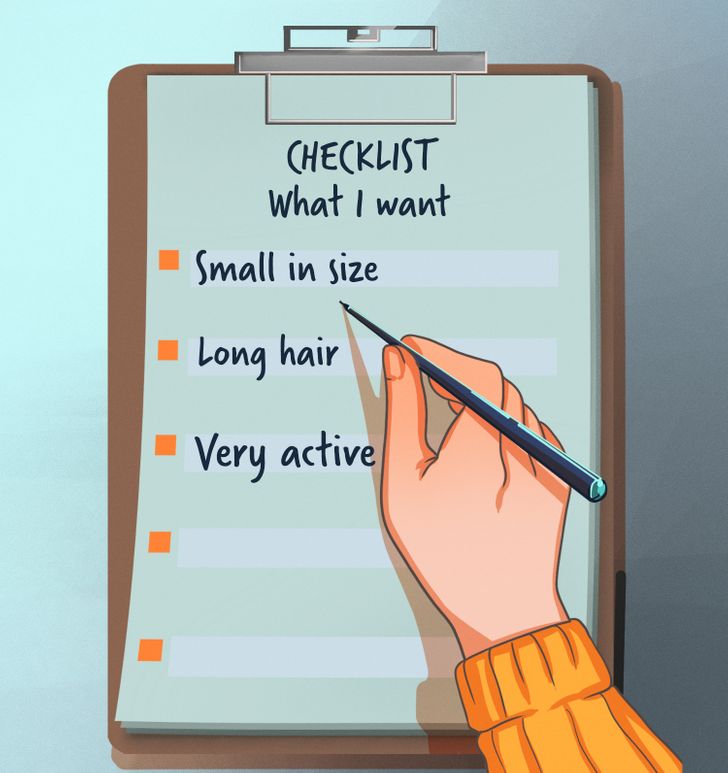
Each breed has a number of individual characteristics that set it apart from other breeds, including its size, temperament, and level of activity.
First of all, you have to ask yourself the following questions:
- What size dog would you like to have?
- What lifestyle do you and your family lead? The answer to this question will show you whether high activity breeds are suitable for you, like a Border Collie, or those with less energy, like a Basset Hound.
- What age do you prefer: a puppy or adult dog?
- How important is pedigree to you? Do you want to take part in dog shows?
- How much space do you have for your dog at home? Large breeds with long tails need room to move. In moments of joy, the dog will actively wag its tail, sweeping away everything in its path if your apartment is small. If you have always dreamed of a German Shepherd, but there is not enough space for it in your house, maybe a smaller shepherd dog, like a corgi, will suit you better.
- What kind of temperament do you prefer: sociable, independent, docile, and so on?
How to predict puppy temperament
There are a few tests that can help determine a dog’s temperament. The older the puppy is, the more accurate the test will be. Of course, socialization and training will play an important role in shaping the dog’s behavior. However, these tests will help determine your compatibility in the early stages.
Don’t test a puppy when it’s tired and sleepy. Results may vary slightly from breed to breed. These tests help to identify 3 main types of temperament: active, neutral, and passive.
- Active puppies are energetic and intelligent, suitable for owners who have the time and determination needed to train and socialize them.
- Neutral puppies are sort of the regular guys of the dog world. They are calmer and more relaxed.
- Passive puppies are shy and support is important to them. They are afraid of change. They do best with people who have the patience and time for extra socialization.
Test 1: Observe
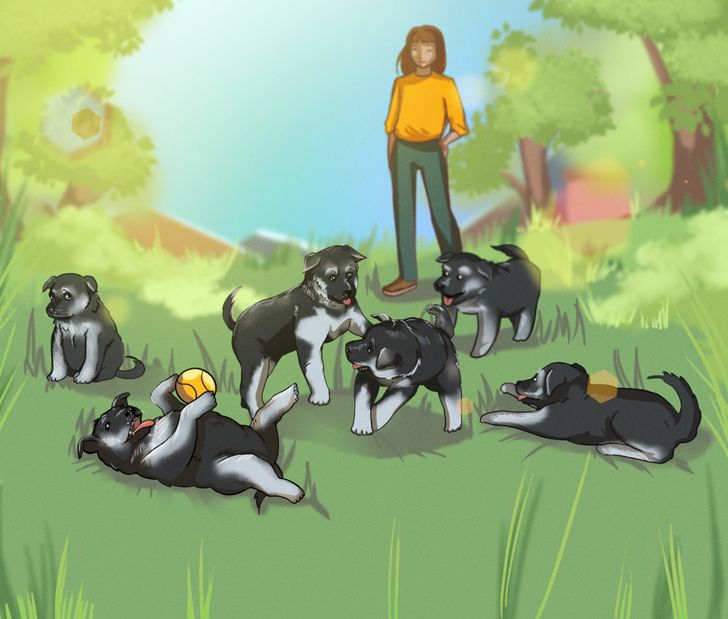
First, watch the puppy’s behavior for about 30 minutes. This will help you get to know the dog better.
- Active puppies participate in group games.
- Neutral puppies can leave the group and go about their own business.
- Passive puppies are more likely to stay out of the group.
Test 2: Play
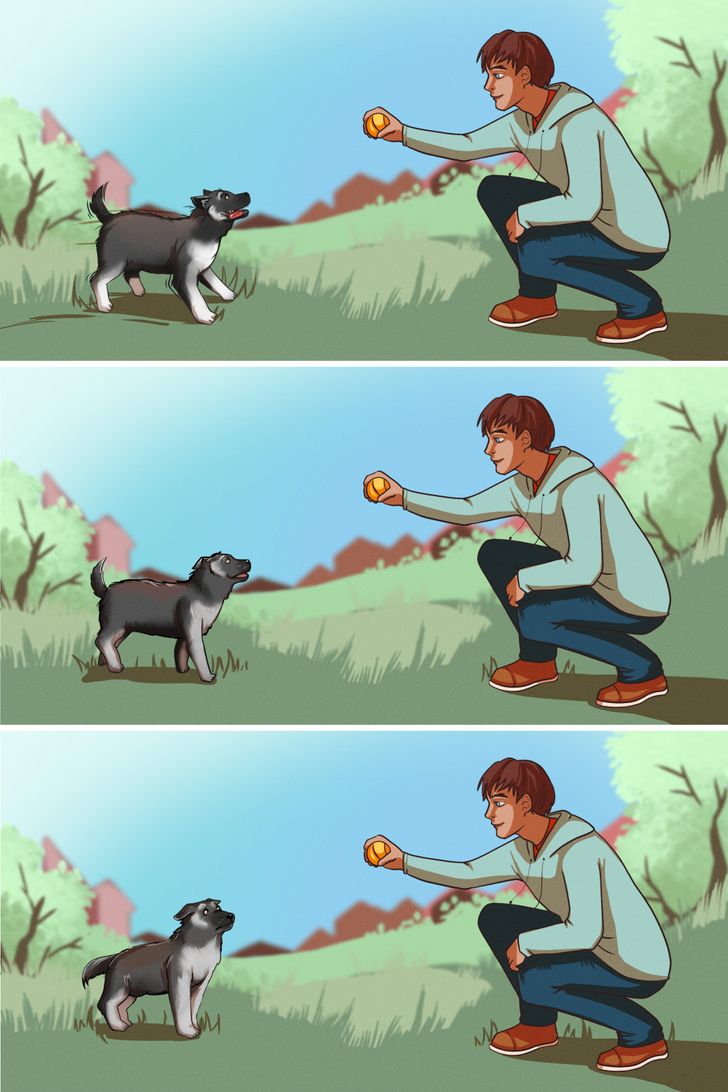
If possible, take the puppy aside and play with it. If you were given permission, you can offer the puppy a treat or a toy. See how it reacts to you and to what you give it.
- An active puppy will rush to you, like an old friend, and will be energetic and demanding.
- A neutral puppy will act a little calmer.
- A passive puppy might show anxiety, but let you pet it, or it might run away toward other puppies.
Test 3: Cradle
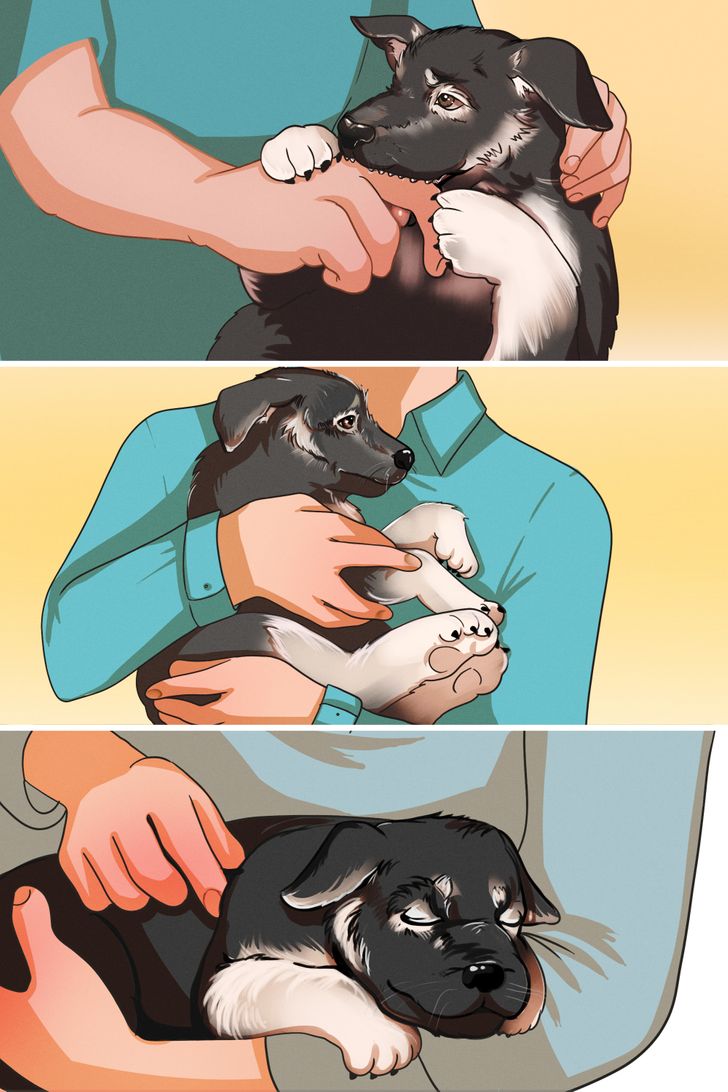
Carefully cradle the puppy in your arms:
- An active puppy will kick like crazy and won’t sit still.
- A neutral puppy will probably wiggle a bit, and then relax.
- A passive puppy will most likely relax immediately.
Test 4: Call back
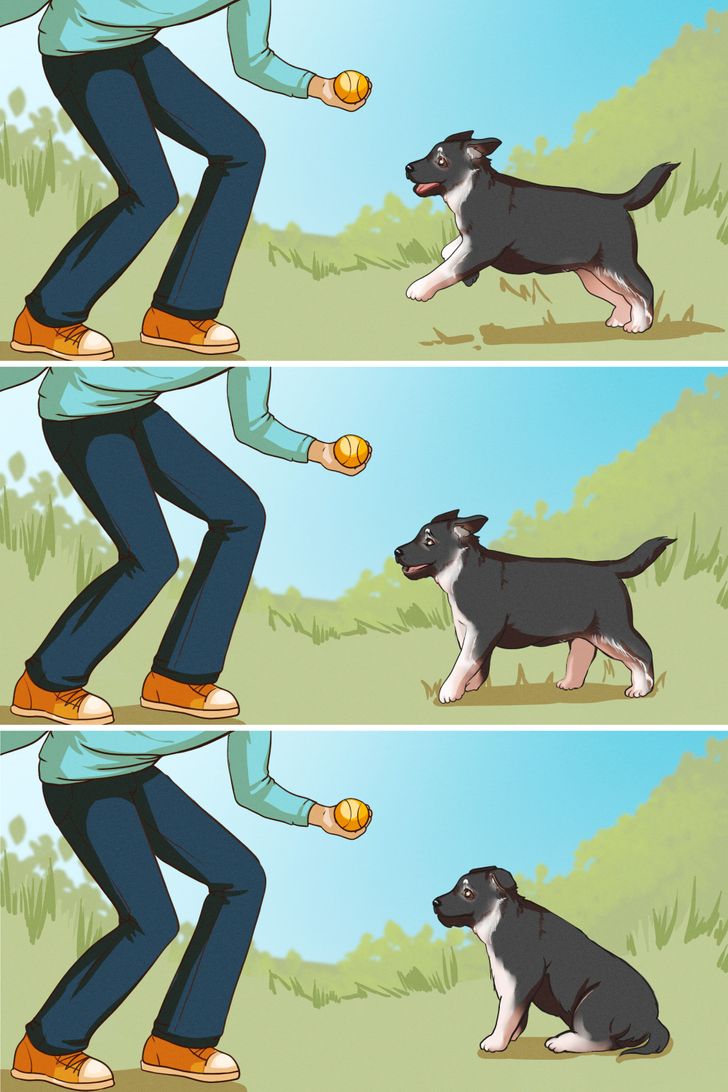
While holding out a treat or a toy, call to the puppy as you back away from it.
- An active puppy will race after you.
- A neutral puppy will follow happily.
- A passive puppy will probably hesitate and need coaxing.
Test 5: Tuck and pat
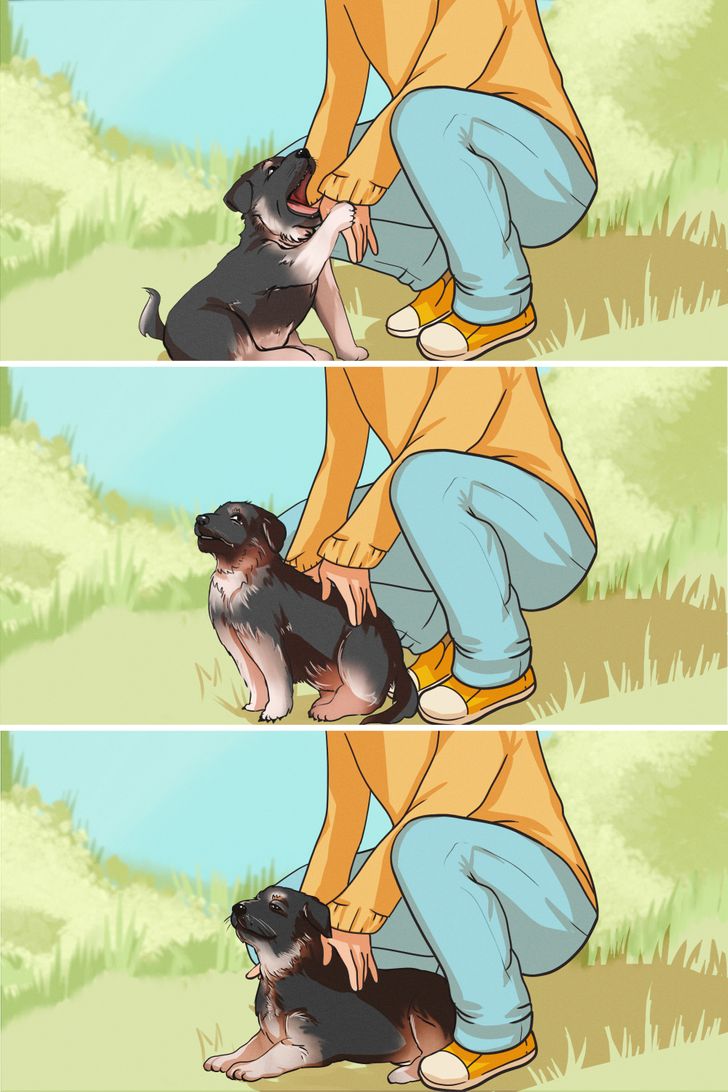
Kneel on the floor and settle the puppy between your legs. Pet it in long, gentle strokes as you praise it softly.
- An active puppy will try to wiggle free and nip you.
- A neutral puppy will wriggle and then relax.
- A passive puppy will simply melt in your embrace.
Test 6: Bend over
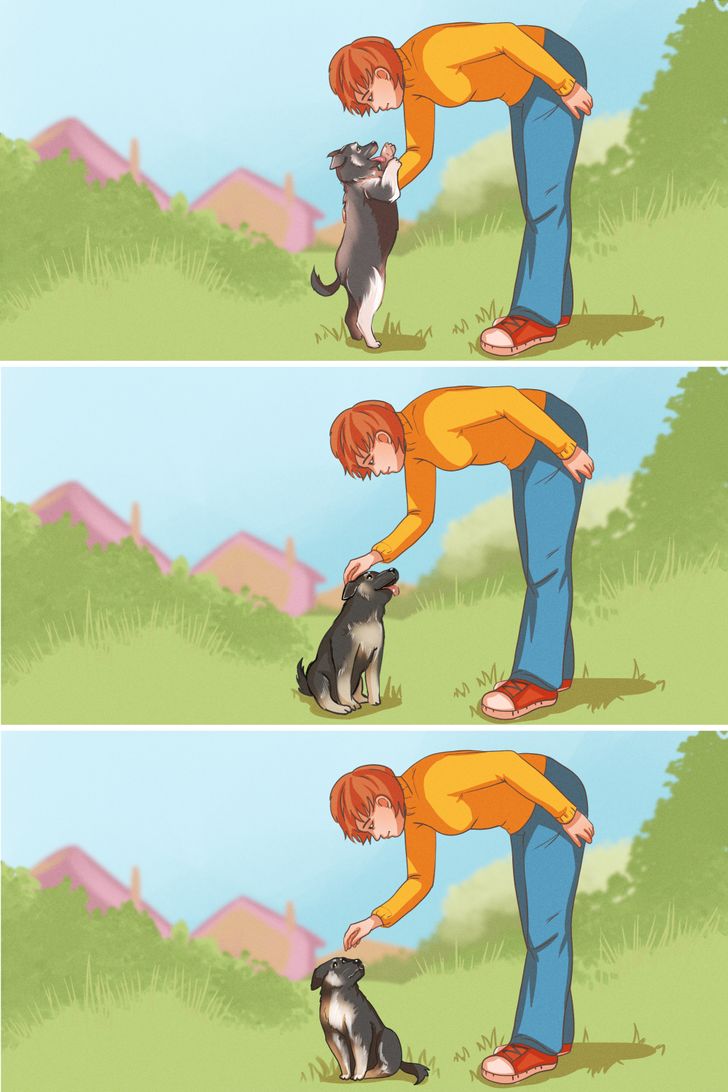
Approach the puppy and lean over to pet it. Your actions may seem overwhelming to the puppy because you’re so large and it’s so small.
- An active puppy will most likely jump up to your face.
- A neutral puppy will relax and let you pet it.
- A passive puppy will cower in confusion.
Test 7: Hold the puppy’s back leg
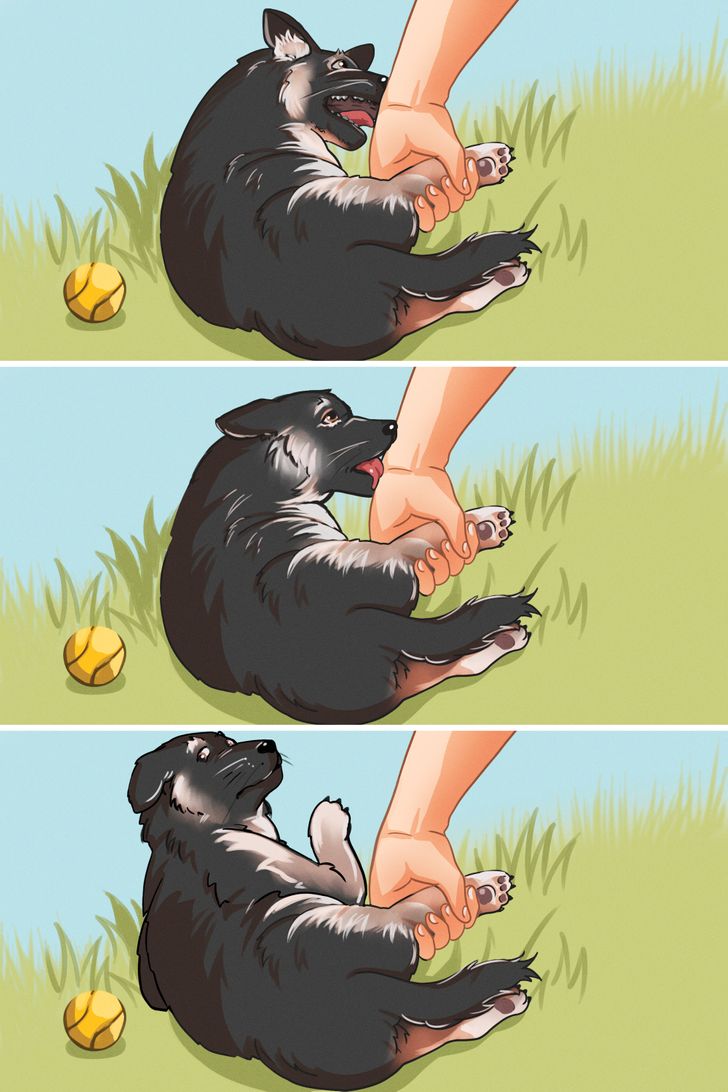
This exercise lets you test the puppy’s sensitivity to discomfort. While petting the puppy, gently lift the back leg and hold it for about 5 seconds.
- An active puppy is sensitive to pain and will try to protect itself.
- A neutral puppy will try to lick you or place their mouth on you gently.
- A passive puppy will show concern.
Test 8: Startle with sound
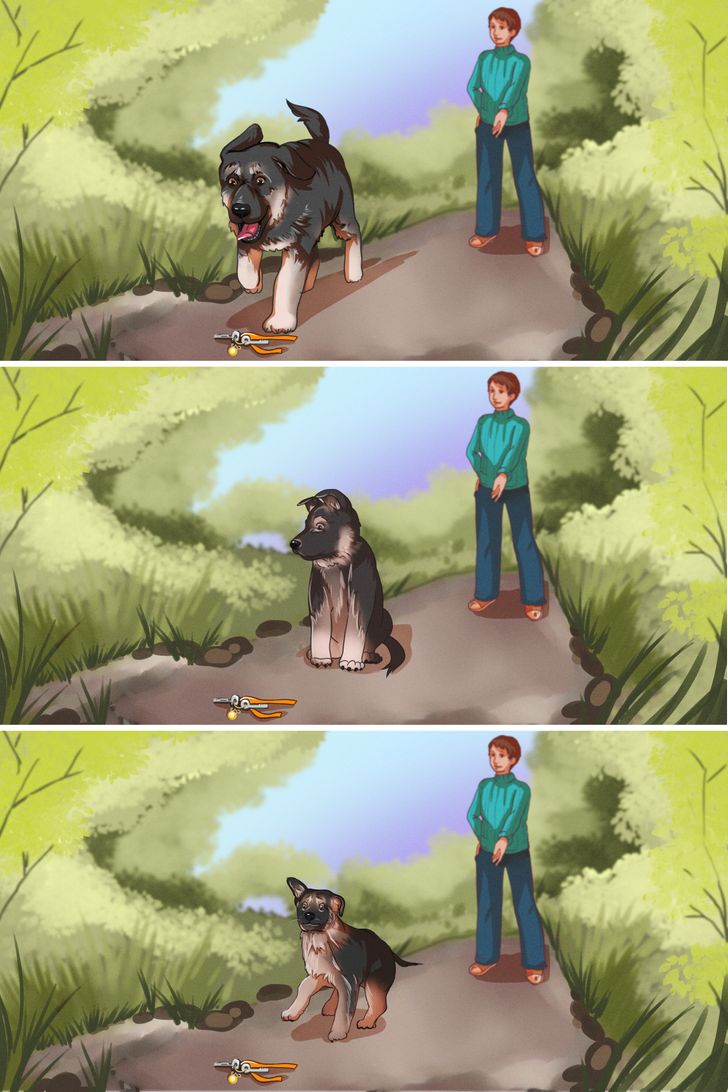
When the puppy least expects it, tap 2 metal spoons or keys together, and drop them about 3 inches away from the puppy. Look at its reaction to the sound and its behavior afterward.
- An active puppy will show intense interest in the object.
- A neutral puppy will just cast a nonchalant glance.
- A passive puppy will show fear and withdraw.
Test 9: Do the crash test
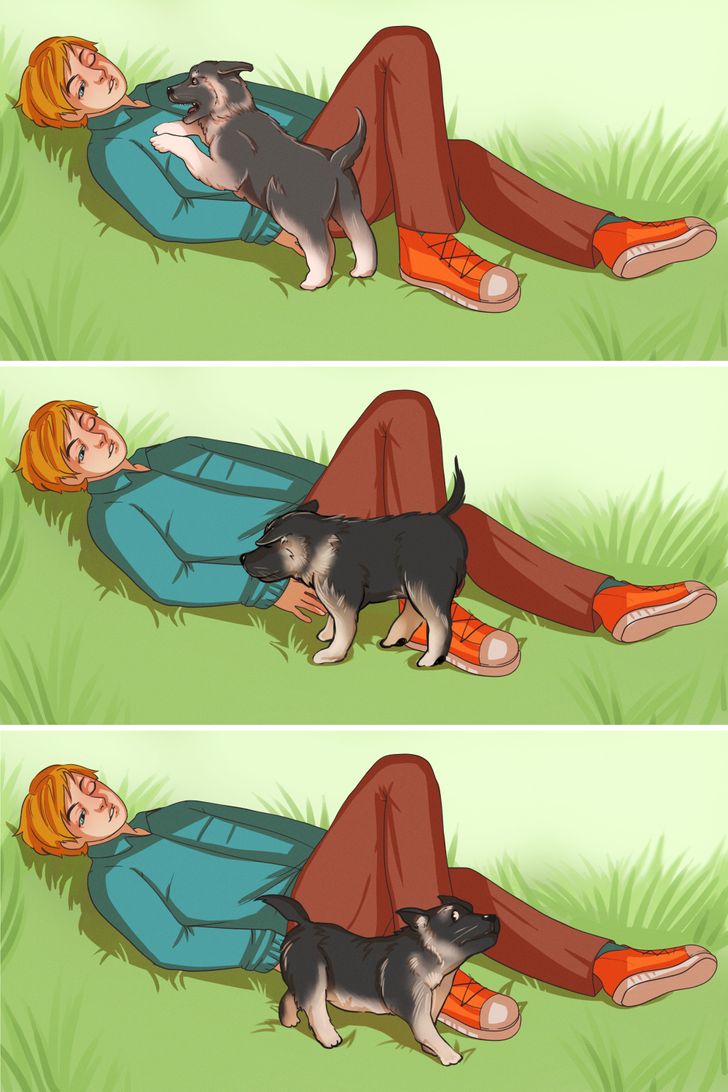
Stand and wait until the puppy is no longer interested in you. After that, suddenly fall to the ground and exclaim “Ouch!” Watch the puppy’s reaction.
- An active puppy will race over and jump on you.
- A neutral puppy will come to sniff or lick your face.
- A passive puppy will most likely cower and run in fear.
Test 10: Lift the puppy
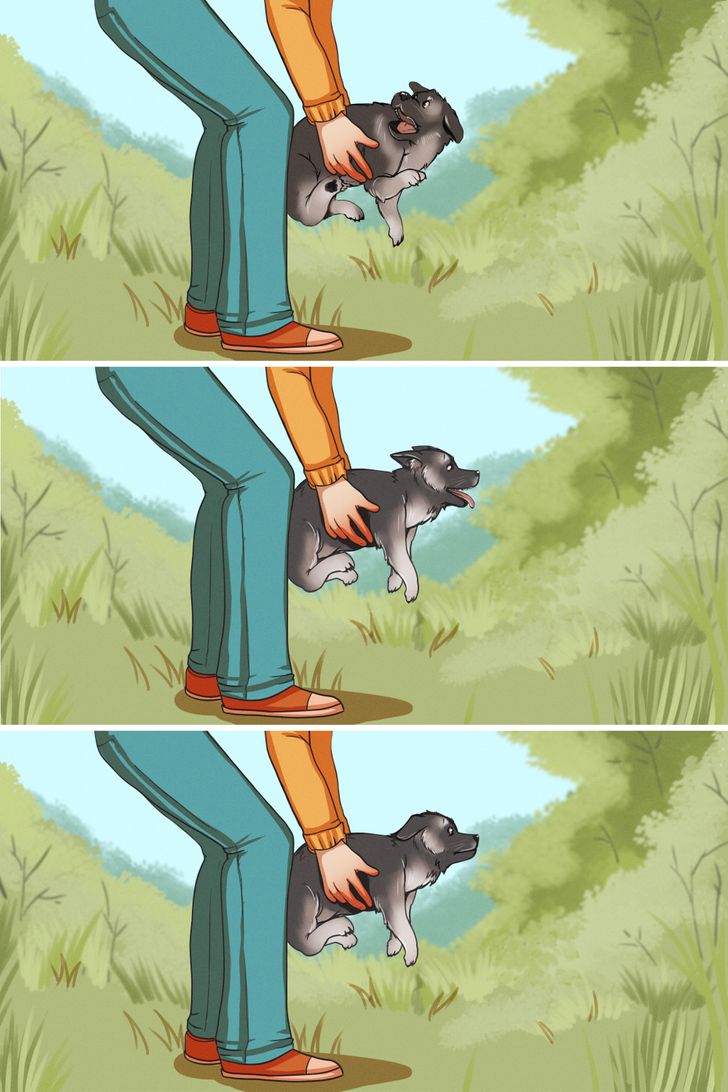
Carefully lift the puppy 4 inches off the ground and hold it there for at least 5 seconds.
- An active puppy will wriggle and even bite.
- A neutral puppy will relax and look around.
- A passive puppy will look fearful.
Check the puppy’s health
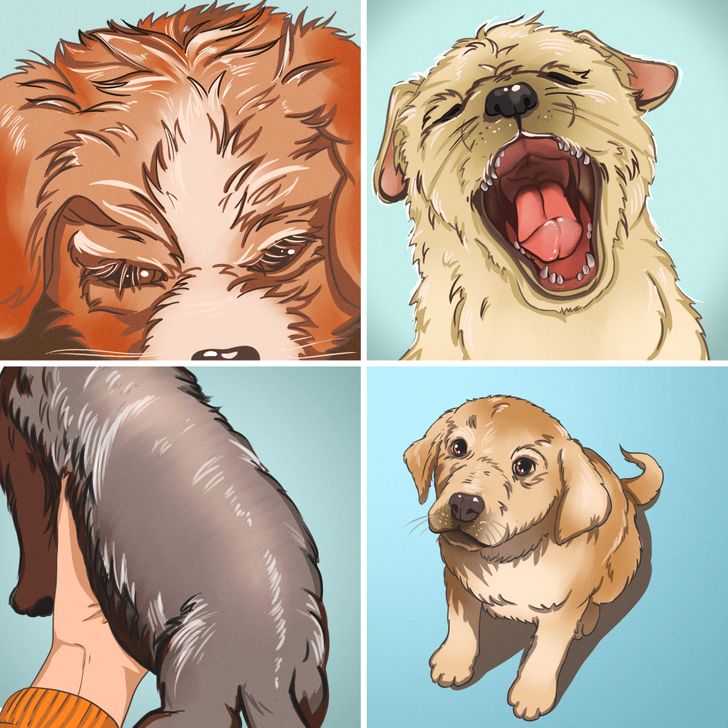
It’s best to take the puppy to the vet for a health check. But there are a few parameters that you can check yourself.
- The puppy’s coat should be shiny.
- It should be well-rounded.
- The puppy should not be too skinny or too fat.
- There should be no visible physical problems, and the jaw should be normally developed.
- The eyes, ears, and other parts of the body should be clean and free of discharge or inflammation.
- The puppy should be able to react to clapping or dropping something on the ground, see and find toys or treats.
Adopting or buying from a breeder

The dog either can be adopted from a licensed kennel or a shelter. In both cases, there are pros and cons.
Pros of adopting a dog from a shelter:
- You can find a grown-up dog trained in basic commands. But this doesn’t mean that you won’t have to train it. It might be a little easier than training a puppy from scratch.
- The dog might already be potty trained.
- The dog will be very grateful for the opportunity to start over in a new home and a new family.
- The caretakers at the shelter will be able to tell you about the dog’s personality.
- Even in a shelter, you can find a purebred dog. There are also special groups that rescue dogs of a certain breed from poor living conditions.
- The dog will already be vaccinated and neutered.
- Most likely, the dog can be adopted for free or for very little cost.
Cons of adopting a dog from a shelter:
- If you are thinking about adopting a puppy, you may need more time to find it in a shelter, because there are more adult dogs.
- It may take longer to find a pedigreed pet.
- A shelter dog may have physical or psychological problems, which can be corrected with the help of a dog handler and/or a pet psychologist. It just takes more time and a lot of love.
Pros of adopting a dog from a breeder:
- Responsible breeders know the origin of the puppy, namely its ancestors, working qualities, predisposition to diseases, and so on.
- The puppy will be healthy and socialized.
- The breeder will be able to tell you about the specifics of the breed, and how to manage it.
Cons of adopting a dog from a breeder:
- The breeder may not be responsible.
- An irresponsible breeder doesn’t care about the health of the dogs, so puppies may have health problems, including congenital ones.
- A puppy from a breeder is more expensive than a dog from a shelter.